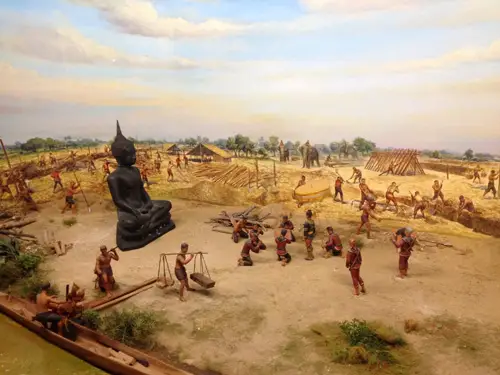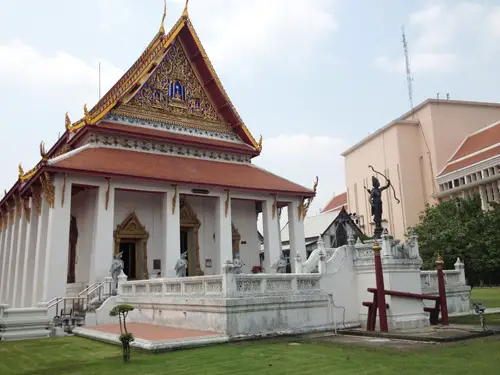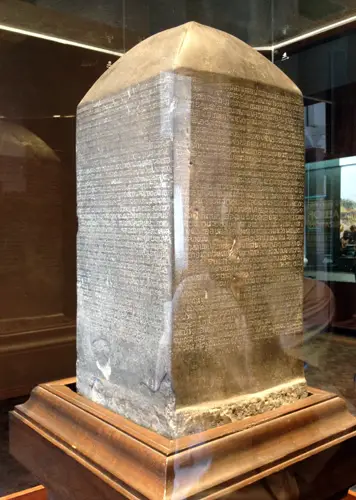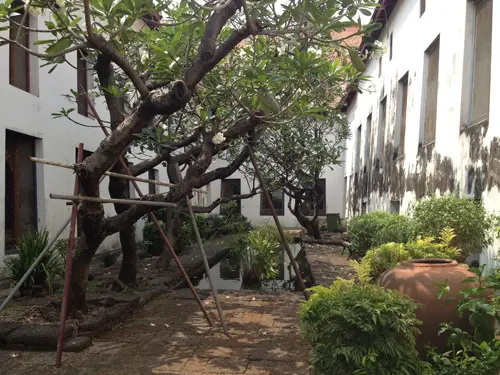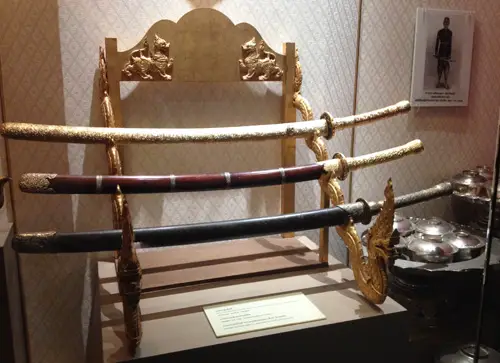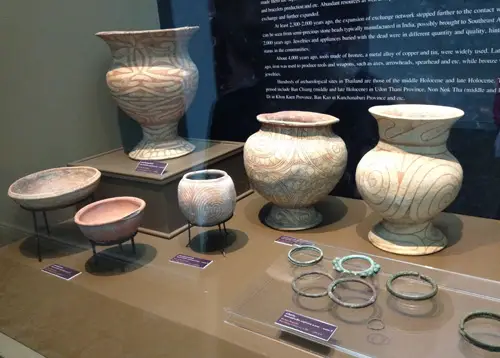Quite often we find ourselves always looking for the next best thing: smart phones in hand and already logged into our social media accounts, wanting to be the first to upload a photo of this new attraction and then bask in the fame of having the most retweets, the most Facebook shares and comments, or the most Instagram likes. After a few days, when the news-feeds are flooded with “the next best thing,” we’re back on the look-out for even more things but, unfortunately, in the meantime we oversee the simple fact that there’s absolutely nothing wrong in the more “traditional” attraction when aiming to find the truly ‘best thing.’
Undoubtedly, one such attraction is Bangkok’s National Museum; an institution that can offer the Thai locals, the expats, and the tourists a very nice long day in absorbing Thai history and culture. Actually, to thoroughly explore the abundance of exhibits and the many buildings that house them would require far, far more than just one visit!
Although it is now run under the care of the Department of Fine Arts, the National Museum in Bangkok was actually a palace for the Siamese royalty in the past and was also known as the Front Palace, or “Wang Na” in Thai. The palace used to house the ‘Prince Successor,’ a position which existed until the time of significant reforms in the Siamese society, when King Chulalongkorn abolished this title in the late 19th Century and replaced it with the more Western-inspired concept of having a Crown Prince as the heir–apparent to the throne of the Kingdom.
The original purpose of the Front Palace was to oversee the construction of the Grand Palace and the construction of both buildings began in 1782. As years passed by, the Uparat (or the Prince Successor) which was usually the king’s son or brother, became very influential and even had their own private army. Today, the complex which housed the Front Palace is located in its exact original position, north of the Grand Palace, with Sanam Luang in-between and flanked by Thammasat University and the National Theatre.
In 1874, the Front Palace officially became a museum and, in 1926, it was named as Bangkok Museum. It is now the biggest museum in Thailand, boasting 38 national branches and, according to the 2014 edition of the Lonely Planet, it is also the largest museum in Southeast Asia.
The entrance to the museum is on Na Phra Thai Road and the ticket counter is found immediately on your left-hand side. With the ticket, you also get a brochure (in Thai or English) with the map of the museum compound and labeled with the names of the buildings and the kinds of exhibits shown inside. It’s not really necessary to follow a certain set route when visiting the museum, but it’s advisable to start with building No.1 and then move on in the adjacent building No.2 (entered by a side door). These two exhibition rooms, housed in the Siwamokhaphiman Hall, give an excellent overview of the history of Thailand from its beginnings leading all the way to the Bangkok period.
The indisputable pièce de résistance of the first gallery is a massive four-sided stone inscription called the “King Ramkhamhaeng Inscription” which was listed in the Memory of the World Register by UNESCO in 2003. The inscription presents King Ramkhamhaeng’s biography, describes the city of Sukhothai, and records the invention of the Thai language script which stands as the foundation of the modern Thai script. According to Dr. Trongjai Hutangkura, a researcher at Princess Maha Chakri Sirindhorn Anthropology Centre, as it is: “dated to the end of the 13th century, the King Ramkhamhaeng Inscription is perhaps the oldest surviving Thai language inscription.”
After you’ve had your initial dose of immersion into Thai history, you can then move on to the other twenty or so exhibition halls and buildings within the museum complex to seek more detailed information. You will most likely find something to suit your interests there. Pottery, ceramics, bronze and stone statues, beads and bracelets, arrowheads, cannons, tobacco pipes used by Thai royals, ancient swords and spears, modern weapons, models of ships, dioramas of entire cities, and many more exhibits, are all just a few of the things you can pour over at the National Museum in Bangkok.
Among the many religious artifacts on display, it is worth mentioning the Phra Buddha Singh, the second most important Buddha image in the entire Kingdom of Thailand which is housed in the Buddhaisawan Chapel (building No.3). The 166-cm tall image is made of bronze and plated with gold. Before coming to rest in this chapel in 1787, the legend has it that it had travelled from Sri Lanka to Sukhothai (via Nakhon Si Thammarat) and then on to Ayutthaya, Kamphaengphet, Chiang Rai and Chiang Mai. Amazingly, the murals that surround this extraordinary Buddhist statue are the oldest religious paintings in Bangkok.
Apart from the exhibitions inside each building, it is also worth exploring the smaller structures dotting the entire complex. For example, there’s a “Red House,” which is a medium-sized building made entirely of teak wood and, obviously, painted all in red, which houses some paraphernalia that belonged to Queen Sri Suriyen, the wife to KingRama II. Right in front of this former royal residence, a beautiful sala called the Samran Mukhamat Pavilion gives the weary travelers a cool place to sit down and relax before continuing their exploration of the museum.
All exhibits are labeled with both Thai and English explanations and there are also a few interactive and multimedia displays. Apart from the major permanent exhibitions, some halls also house temporary exhibitions which are also worth visiting, especially as there’s no extra charge. You can use your camera freely but, in some halls, flash photography is prohibited in order to protect the more sensitive material in some exhibits.
The grounds of the museum complex are well maintained: the grass is neatly mowed, and the few visitors who attend make it a very nice place to escape the commotion of city cars, buses and street vendors who hawk their wares in the museum’s neighbourhood. The National Museum Volunteers group organizes guided tours in English, German, French and Japanese. Check out their excellent website for more information with regards to the tours timing and the other activities they’re involved in.
The museum is open from Wednesday to Sunday from 9am to 4pm but some halls might be closed at noon when the museum staff will all have their lunch break together. Tickets cost 50 baht for Thai nationals, free for Buddhist monks and students in uniform, and 200 baht for foreigners. To find out more about the National Museum in Bangkok and its branches in the provinces, visit the bilingual (Thai-English) website of the Department of Fine Arts.
